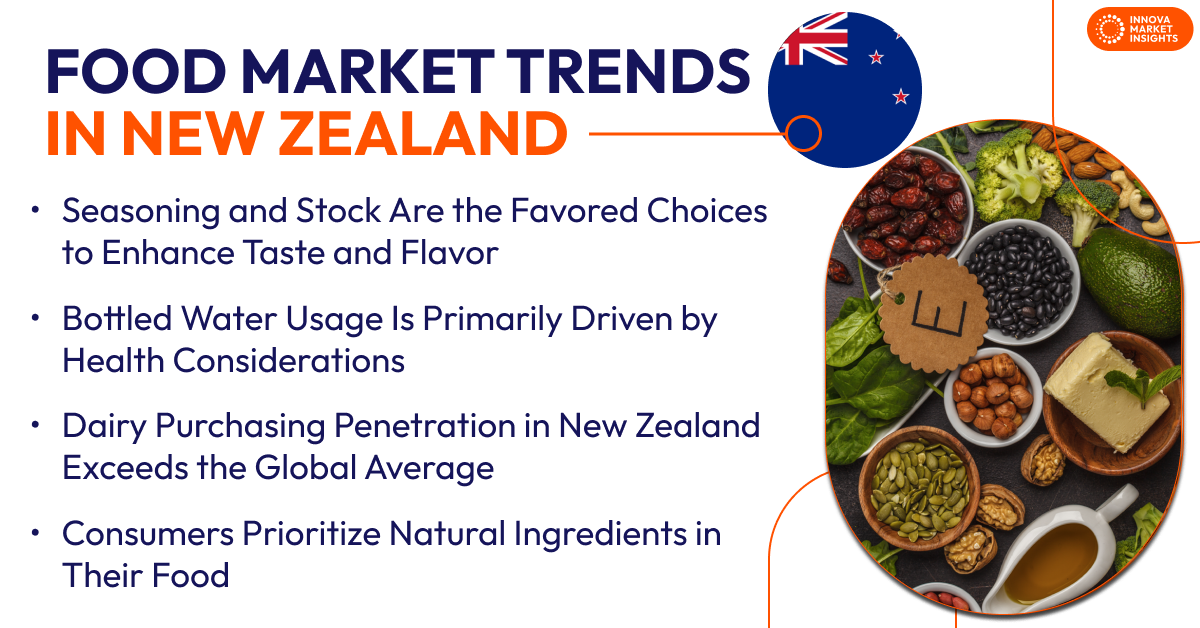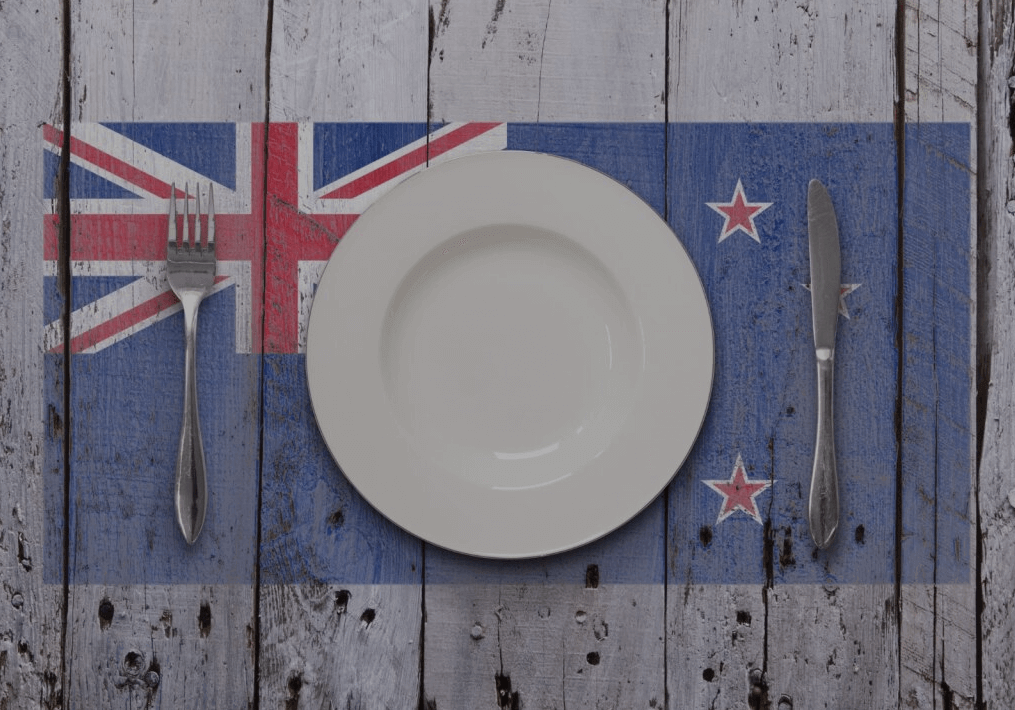August 11, 2025 – New Zealand is a country that knows its food and beverages, being a major exporter of both in the surrounding region. As a change in the country’s consumption habits unfolds, a demand has risen for various categories influenced by a number of factors. To examine this more closely, Innova Market Insights has compiled an analysis of over 30 different food and beverage categories, exploring food and beverage trends and the future it holds.
Global Issues on a Different Scale
Planetary health is the key matter for consumers on a global scale, especially with the impact that climate change is having not just on general health, but food security and the economy too. This puts more of a focus on strategies to cope as challenges exist for the general population, which is aging and growing, in the form of obesity and mental health concerns. All of which is putting healthcare systems under strain and making population health the secondary global concern.
Top Personal Issues Affecting Consumer Spending
When it comes to personal issues for their family, food trends indicate that consumers rank personal finances as being top of mind. Closely followed by other areas of concern such as lack of affordable and healthy food or good healthcare provisions, it is clear that what hits their pocket dictates what is spent across the board. Seeking security and reassurance is a demand that is placed on the shoulders of consumers in New Zealand right now. The same goes for their food and beverage choices, which they choose because of honesty and transparency at such a volatile time.

Important Drivers in New Zealand
Keen to safeguard their health when purchasing food, striking a balance between indulgence and nutrition is important for them too, often favoring options with protein, fiber, and those that are low in sugar or fat. This caters to the growing food trends moving towards healthier snacks that align with wellness goals. Consumers are drawn to new and diverse tastes that provide variety in their lifestyles, exploring bold and unique culinary trends and multicultural food that go beyond traditional offerings. Even in this category, shoppers are willing to pay more for premium products that offer quality, health benefits, or natural ingredients.
Beverages and Market Penetration in New Zealand
When it comes to thirst-quenching beverages of the alcoholic and non-alcoholic variety, consumer consumption has varied significantly in the past twelve months. In fact, beverage trends show that there has been a 40% decrease in drinks such as cider, while there was an increase of 23.2% in non-alcoholic categorized beverages. The strongest performers within the alcoholic category were: beer, wine/sparkling wine/champagne, and hard alcohol/liquor/spirits, respectively.
Both alcoholic and non-alcoholic beverages have taste and flavor influencing purchases, with a declining alcohol consumption due to budget and health concerns. Premium product claims influence alcoholic beverage purchasing decisions, with data showing that premium claims attract a fifth of all consumers. Traditionally crafted products and those made with real or natural ingredients also resonate with buyers. Reduced sugar claims in non-alcoholic beverages have driven consumption, along with no artificial flavors or colorants, which have been the most appealing claims for customers to buy into for non-alcoholic beverages.
Health Claims Are Becoming Prominent in Soft Drinks
Bottled water usage in New Zealand is primarily driven by health considerations, cost, and convenience, which makes sense for a significant yet essential staple of beverages. Locally sourced products fare well in the market and those with perceived naturalness even though cost and convenience drive sales. Soft drinks are beginning to feature health claims and consumers like it when indulgent products such as these fit their lifestyles. It was found through Innova’s research that around one in two consumers cited taste and cost as the most important factors of note when making a purchase. Evidently, in a drink that is carbonated, reductions in sugar and real ingredients attracted the most appeal.
Adapting to changes in taste preferences and lifestyle has increased consumption of soft drinks. Flavor and cost are the key attributes, with reduced sugar and real/natural ingredients being the key claims influencing consumers when purchasing soft drinks. While increased consumption of juices and smoothies has also occurred, this can be attributed to the mindset of health-conscious shoppers looking for more vitamins in their diet.
The Most Important Attributes of Hot Drinks
Hot drinks such as coffee and tea are also experiencing their own transformation, with changing tastes and lifestyle preferences leading to increased consumption patterns. There is more variety than ever before, with more health benefits and novelty particularly driving the surge behind coffee. Beverages trends reveal that natural ingredients are the top claim in hot drinks generally, with New Zealanders leading the pack for hot beverage consumption globally. Ideally, a natural coffee that has a traditional production but a premium feel tends to be the winner for coffee drinkers, with 67% preferring it for breakfast and 49% in the mid-morning. In comparison, though, about 57% prefer drinking hot tea for breakfast, and 40% prefer to drink it in the evening.
Health-Focused Claims for Dairy Lead the Way
Beverage trends show that dairy purchasing penetration in New Zealand exceeds the global average with a purchasing penetration of 84%. The dairy market outperforms the global average for cheese and milk or flavored milk drinks, which also exceeds the global averages. Yogurt formats do not share this similarity, however, despite the growing demand for dairy. Consumer prioritize taste in their dairy consumption, with cost playing an important part in purchasing power too. In terms of claims, 1 in 5 consumers consider natural ingredients, the source of protein, and reduced fat to be influential.
Consumer Preferences in Meal Preparation Solutions
When it comes to meal prep, seasoning and stock are the favored choices to enhance taste and flavor, which drive intake alongside cost. Consumers in New Zealand consider brand, convenience, package format, and freshness as key attributes when selecting meal preparation solutions. For those that are savory and sweet spreads, naturalness, traditionally made, and reduced sugar are prominent in savory and sweet spreads. Health aspects and clean label claims are preferred in ready meals. Convenience is a significant attribute in ready meals, as cited by consumers.
What’s Next for Growth Drivers in New Zealand?
Expected drivers to come based on research by Innova Market Insights will likely see the rise of natural ingredients. Food trends indicate that consumers in New Zealand are looking for natural ingredients, and they are prioritizing healthier and sustainable food choices. They favor locally-grown produce for its freshness and quality while also wanting nutrition without compromise. They are drawn to food that gives them the feeling of indulgence and healthy eating, with the latter focusing on products fortified with clean label attributes and locally sourced. Brands that balance variety and functional benefits can tap into this market. As is the global trend right now, high protein options, protein-enriched snacks in convenient forms can appeal to health-conscious consumers.
Other key areas to keep an eye on include flavor innovation in a market that has become incredibly diverse. The country’s growing cultural diversity offers food and beverage brands a key opportunity to meet varying taste preferences. By offering culturally relevant products, they can better connect with and build loyalty among consumers. Providing affordable yet quality options by developing budget-friendly alternatives will be present too. A developing category trend will see the combination of plant-based and traditional ingredients to provide cost-effective solutions that would attract consumers looking for affordability without compromising on quality.
This article is based on Innova’s Category Growth Drivers in New Zealand report. This report is available to purchase or with an Innova Reports subscription. Reach out to find out more
